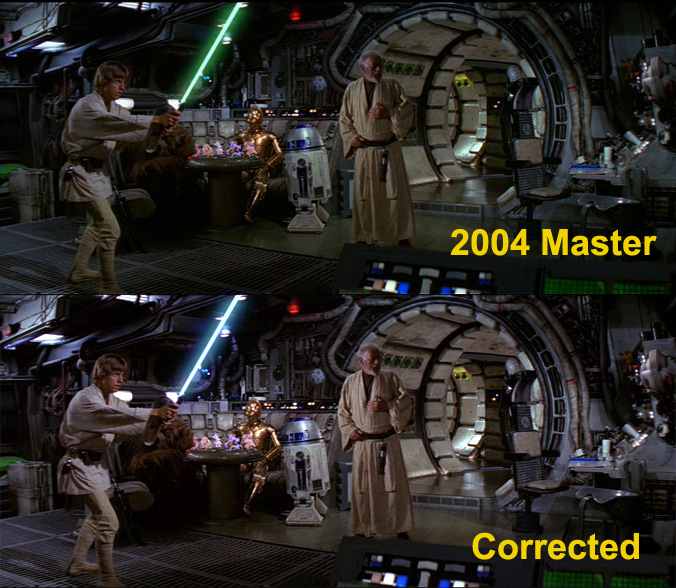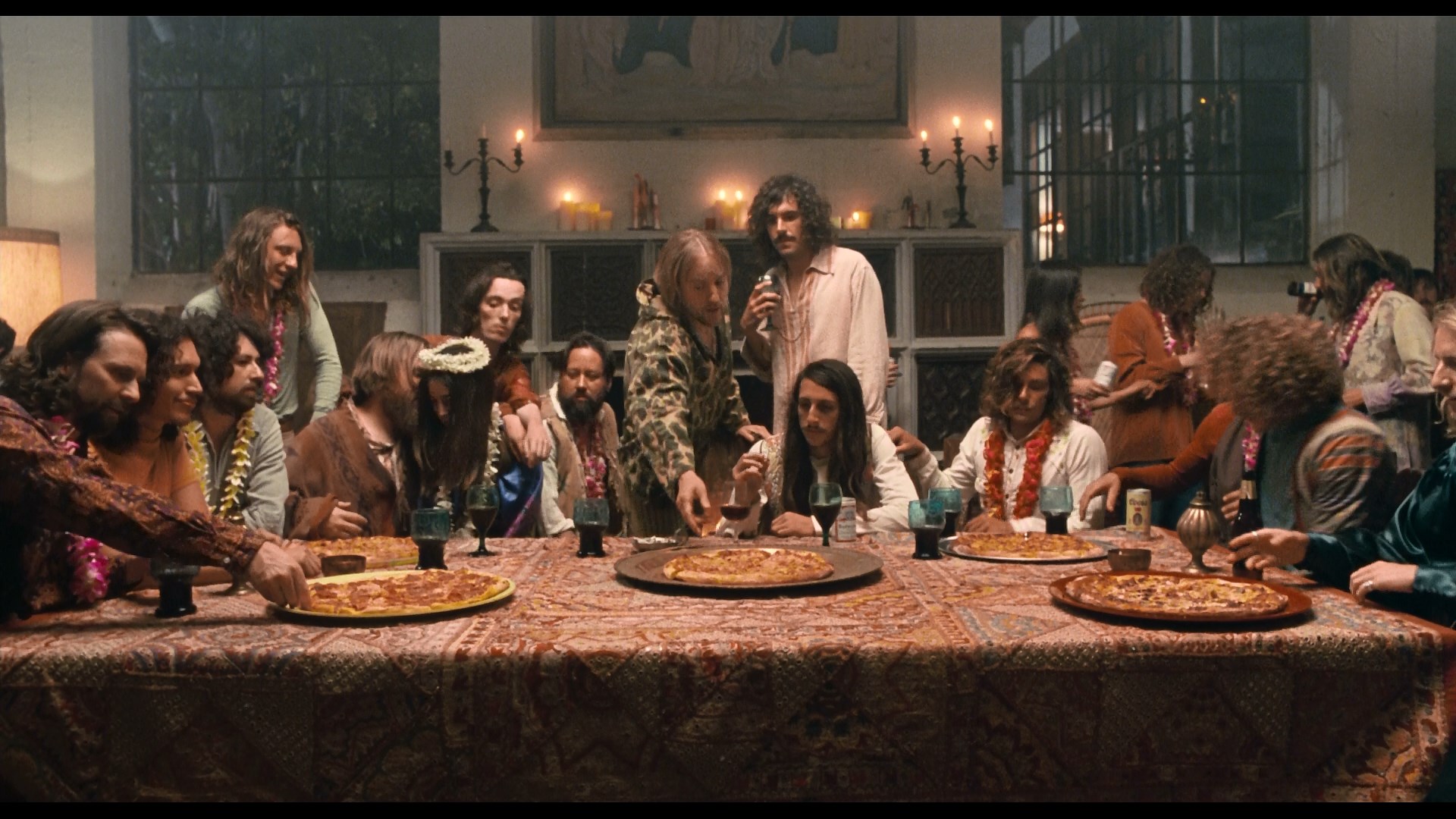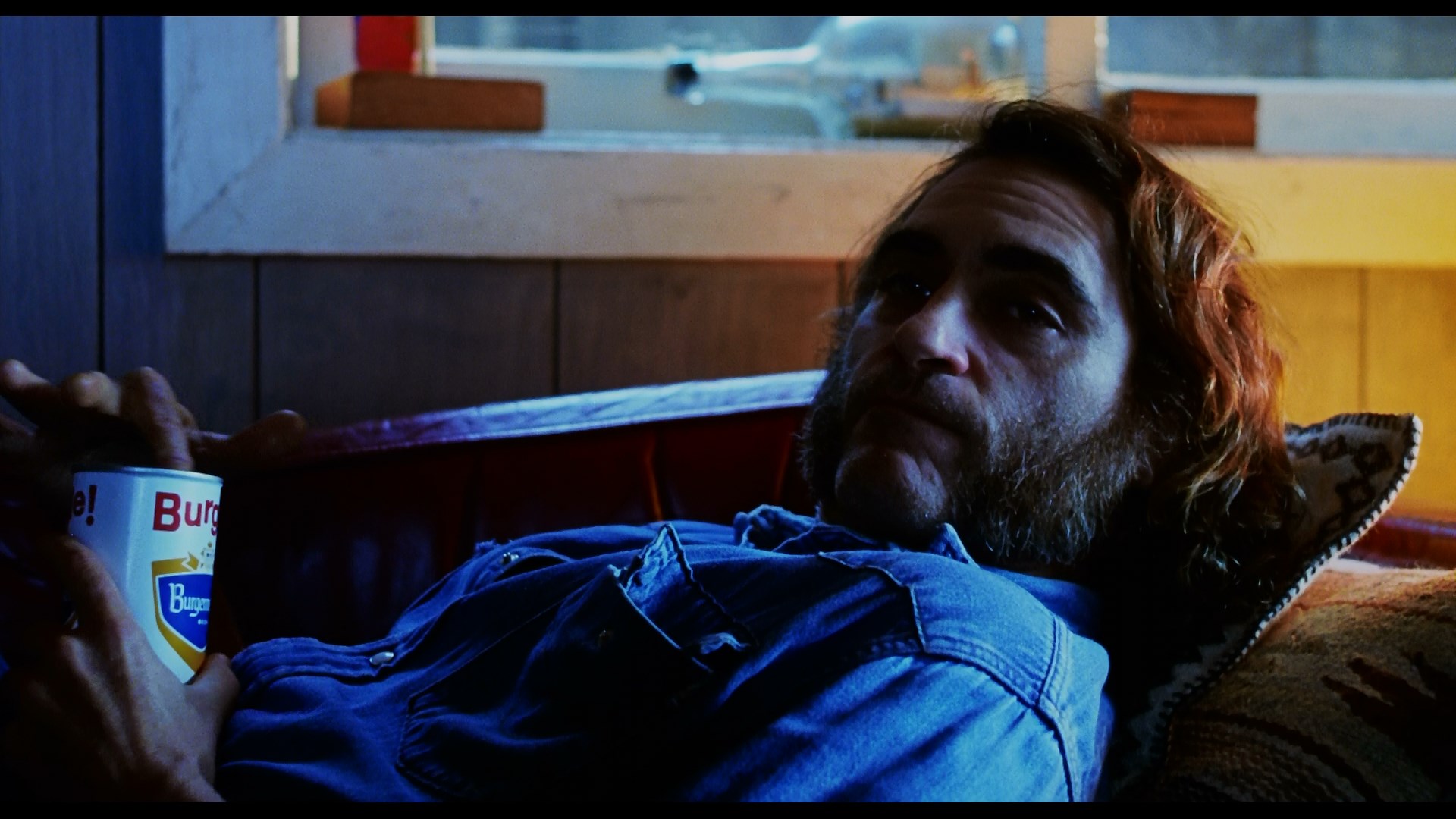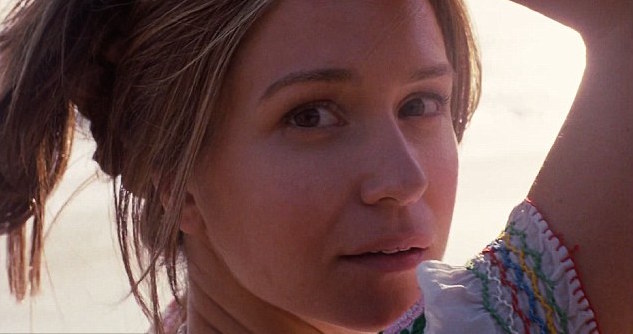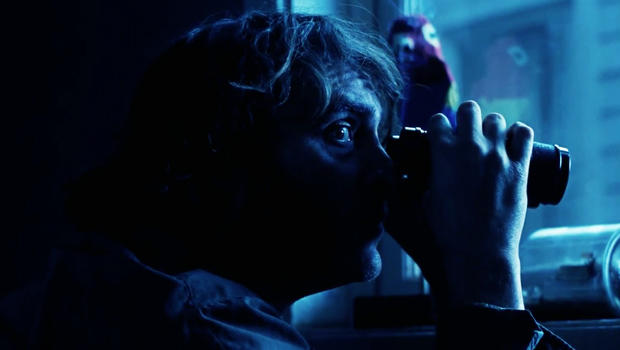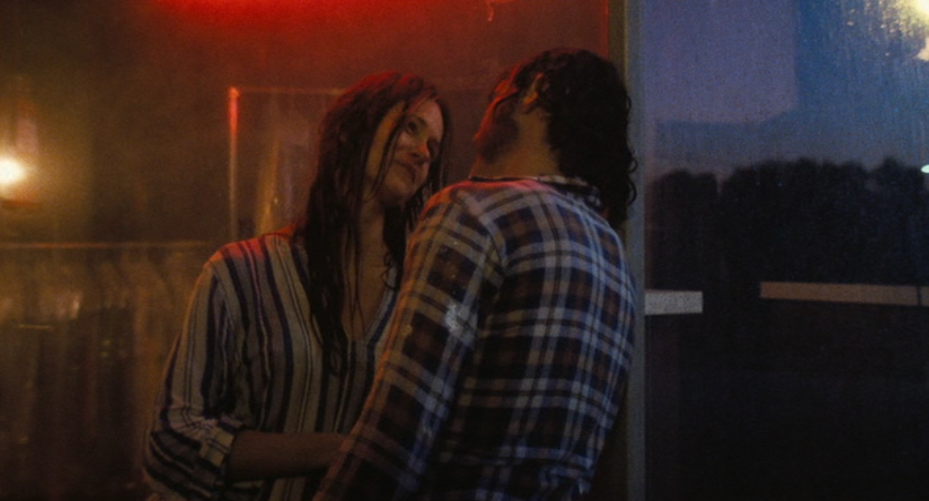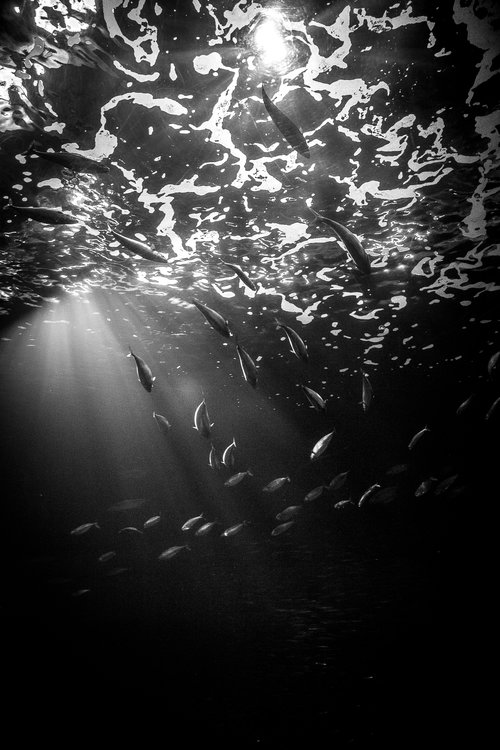Just got an article I've been working on for a long time published by Ribbonfarm! I'm pretty proud of this one; it's about 4,000 words on Hannibal Lecter, Sweeney Todd, Michel Foucault, zombies, economic collapse, the apocalypse, and how all of those things go together. Reproducing the text here for all y'all; the original publication page is here.
Teague, Writhyn, this is the piece that spawned my cannibalistic theology rant in chat a couple of months back. Thanks for putting up with my ramblings. 
- - - - - - - -
"It's Only Cannibalism If We're Equals"
by Graham Warnken
Almost all accounts of cannibalism throughout the years agree on one thing: it’s a communal affair. Native funeral parties consume the flesh of the departed in a ritual of respect and grief. Foreign warriors devour foes in cruel rites of victory. A group of desperate survivors stranded on the sea or in a mountain pass draw straws to see which poor soul will offer himself up.
No matter the situation, the many consume the one—the deceased is partitioned out amongst his friends and relations, the defeated champion doled out to boost morale, the weakest link sacrificed that his companions might live. The latter in particular, while it doesn’t remove the central horror of the act, does possess a certain sense of justice. It allows us to see cannibals as more than monstrous. When we think of the Donner party, we don’t recoil in terror. We feel revulsion, but we understand. The doomed pioneers’ act, born of desperation, was all that allowed the community to scrape through its frigid circumstances, minus a few members.
In the Enlightenment era, this communal cannibalism was an excellent example of the bounds of natural law. Cătălin Avramescu’s An Intellectual History of Cannibalism describes the general philosophical view of anthropophagy by way of necessity:
When danger threatens us and another equally, we are obliged to think first of ourselves [. . .] we must set precedence on our own interests, when they enter into conflict with those of another. [. . .] If we accept that necessity—evident and unproblematic in the case of killing [an] aggressor—can excuse an action that is illicit in itself, then on the basis of this reasoning we must also tackle the aberration of forced cannibalism, since it is directed by the same natural and legal resorts.
As with any philosophical topic, there was a mind-numbing degree of back-and-forth about the anthropophagus over the course of the Enlightenment, chiefly because he functioned as a pawn in the larger game of whether or not natural law is valid. But the general philosophical consensus was clear. In cases where cannibalism is necessary for the survival of the community, it is abhorrent but permissible.
Even in politics, this pity for communal cannibals tends to hold true. “When the people shall have nothing more to eat, they will eat the rich,” Rousseau allegedly said. This is a blueprint for political discussions of anthropophagy until very recently—it is the many, driven by both desperation and vengeance, who eat the few.
“In All of the Whole Human Race, Mrs. Lovett, There Are Two Kinds of Men and Only Two”
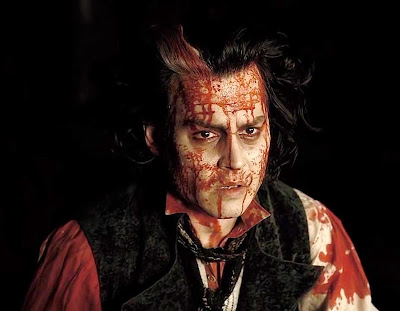
Michel Foucault, in Abnormal, describes the cannibal as “the popular monster” and notes that literal “absorption of each individual by the totality of the social body [. . .] is ritual cannibalism as the moment of the community’s exaltation.” In a Western political context prior to the late 20th century, the cannibal populace is not a series of individual monsters; it is an amorphous collective being, a horror created by the machinations of those in power. Clive Barker’s horror story “In the Hills, the Cities” is a bluntly literal take on the idea: an entire city of people assembles itself into one massive automaton and begins to walk, individuals forming components of a single functioning being. This unity of monstrous purpose, Foucault’s image of absorption by the community suggests, is a sort of bloody nirvana, the eradication of individual consciousness in a communion of literal flesh and blood. It may be horrific, but it’s ecstasy nonetheless.
And whose flesh does this collective being consume? Foucault, drawing the opposite of the cannibal collective’s popular monster, paints the picture of a “princely monster”—the despot, or incestuous sovereign. He writes:
The despot is the permanent outlaw, the individual without social ties [. . .] someone who, by his very existence and merely by his existence, performs the greatest crime [. . .] a total breach of the social pact by which the very body of society can exist and maintain itself. [. . .] The first juridicial monster to emerge in the new regime of the economy of punitive power [. . .] is not the murderer, the transgressor, or the person who breaks the laws of nature, but the person who breaks the fundamental social pact. The first monster is the king.
In the era when Rousseau made his famous quip, this despot’s avatar was the dictatorial monarch. By the time of Foucault’s writing, the classification broadens to include not only despotic political rulers but the tyranny of oligarchs and corporate heads, their own sort of “king.” The necessary component is a monstrous isolation, one that is the antithesis of — but every bit as disturbing as — the cannibal collective’s erasure of individual identity. The despot is defined by his utter contempt for the society whose members he exploits. He will always be more detestable than the anthropophagic masses because he commits his atrocities, not from necessity, but from a whim. He stands outside society, using its channels to benefit himself but refusing to partake in communion with its members.
Numerous popular embodiments of Foucault’s model of the cannibal masses vs. the despot exist, but none is more visceral than the penny-dreadful tale of Sweeney Todd. The demon barber first appeared in the serial novel The String of Pearls, published in 1846 as the industrial revolution chugged steadily to its zenith. His modus operandi? He grinds up the rich customers who enter his parlor and serves them back to the public via his neighbor’s pie shop. Musical theater composer and lyricist Stephen Sondheim would later make explicit the original novel’s themes of the ground-under poor getting their own back. His play turns the character of Todd into a proto-Marxist redistributor of suffering: “The lives of the wicked should be made brief/For the rest of us, death will be a relief,” he lectures Mrs. Lovett, his partner in crime. She later joins him in proclaiming, “How gratifying for once to know/That those above will serve those down below!” as they lay their plans to cut their local princely monsters down to size.
In latter-day interpretations such as Sondheim’s, Todd, probably the most infamous cannibal in history prior to the last thirty years or so, is hell-bent on taking down the privileged—specifically the incestuous, licentious Judge Turpin. Turpin plays the role of despot to the hilt. He is willing to hang children for no reason other than their “probably deserving it.” Prior to the play’s events, he abused his position to transport Todd’s younger self to Australia, before raping the barber’s wife and stealing his child Johanna to raise as his own. Midway through the play, he determines to marry his now-mature ward; when she refuses his advances he sends her to a madhouse. Turpin’s ultimate demise at the hands of Todd, particularly in Tim Burton’s film adaptation of Sondheim’s play, is a near-literal example of cannibalistic ecstasy as described by Foucault, blood spurting from the Judge’s neck in orgasmic pulses as Todd thrusts his razor through the flesh again and again.
Cannibalism, while played for horrific intent, is ultimately meant by Todd to rob Turpin and other tyrants of their power. While Todd and Lovett’s culinary practices are presented as an object of disgust, their ethos, when contrasted against that of the Judge, is clearly superior. Turpin, a warped deformation of a Dickensian villain quite literally incestuous in his sovereignty, rapes and destroys simply because he feels like it. Todd and Lovett’s murder and cannibalism, slaying the corrupt for the sake of their victims, are positively rosy in comparison.
The model presented by Foucault in Abnormal depicts the cannibal masses, if not as heroic, at least as a tragic figure rather than an evil one. Their bloody vengeance is entirely reactionary, contingent upon the despot’s slaking his lusts at the expense of the community while refusing to partake in that community’s joys and sorrows himself. Cannibals may have their vices, but at least they stick together.
Or, that is, most of them do. Because even as Foucault was delivering the lectures in which he explored the duality of the despot and the cannibals, an American crime novelist decided to turn the whole conception on its head.
“I Never Feel Guilty About Eating Anything”

The character of Hannibal Lecter first appeared in Thomas Harris’ novel Red Dragon, published in 1981. He would reach the height of his fame when Anthony Hopkins portrayed him in the 1991 film The Silence of the Lambs, and found new life when Bryan Fuller adapted Harris’ universe for television with Hannibal (2013-15). His appearance represents a seismic shift in the public perception of the cannibal. Lecter is in nearly every aspect Foucault’s princely monster, the “incestuous sovereign.” However, his vice is not the corruption or sexual libertinism that Foucault’s moniker implies—it is the consumption of human flesh.
The good doctor, a brilliant psychiatrist whose taste for long pig cuts short his career, is about as far from a populist or a commoner as it’s possible to get. He’s a patron of the arts. He crafts the flesh of those he murders into exquisite dishes. His eidetic memory allows him to draw places like Florence from memory, in perfect detail. He possesses expert knowledge of literature, art, history, philosophy, and psychiatry. Prior to his imprisonment, his house and office are outfitted with ostentatious luxury. Discourtesy above all is “unspeakably ugly” to him. The latter is not out of a concern for the victims of discourtesy; it arises from his firm belief that he, in his superhuman refinement, is superior to all around him.
Lecter’s pathology is inextricable from his obsession with demonstrating his superiority to humanity. In Fuller’s Hannibal series, protagonist Will Graham sums up his work:
The Chesapeake Ripper kills in sounders of three. He did his first victims in nine days–Annapolis, Essex, Baltimore. He didn’t kill again for eighteen months, then did his next sounder of three in as many days, all of them in Baltimore. I use the term sounders because it refers to a small group of pigs. That’s how he sees his victims. Not as people, not as prey. Pigs.
Lecter may wear what his colleague Bedelia du Maurier refers to as a “person suit,” but that’s all it is. He may walk among society, disguised as one of its members, but he is irrevocably outside the community he preys upon. It’s an ingenious and chilling inversion of the standard political treatment of cannibals. The popular monster, rising up as a dehumanized collective to eat the rich, is nowhere present. Rather, the princely monster consumes the dehumanized collective, spouting in mockery of Rousseau, “Whenever feasible, one should always try to eat the rude.”
An ill-conceived prequel novel that Harris was contractually obligated to write, Hannibal Rising, attempts to provide the character with a background more in keeping with the traditional view of cannibalism as a practice forced upon the powerless by the powerful (it involves Nazis and sisters and is about as silly as that description makes it sound). However, this is belied by Lecter’s words to FBI agent Clarice Starling in the novel The Silence of the Lambs:
Nothing happened to me, Officer Starling. I happened. You can’t reduce me to a set of influences. You’ve given up good and evil for behaviorism [. . .] nothing is ever anyone’s fault. Look at me, Officer Starling. Can you stand to say I’m evil?
Lecter, whether he is aware of it or not (and he probably is), identifies with Foucault’s princely monster. His very existence is a sort of Luciferian playing-at-God; he was birthed ex nihilo and, while he walks alongside humanity, lives forever outside, an observer and tormenter rather than a member. His choice to co-opt the popular monstrosity of cannibalism is a sardonic piece of cruelty on his part. His twisting of Rousseau’s quote gives away the game—he expresses his utter contempt for the community by turning its own particular monstrosity against it. Where cannibalism has for centuries existed in the Western political mind as a form of collective justice, Hannibal turns it into one more tool for the despot to use as an expression of his will.
Lecter represents the beginning of a larger change in the popular perception of cannibalism—and, more broadly, of serial killers. Seven years before the good doctor arrived on the scene, the latest pop-cultural cannibal icon was The Texas Chain Saw Massacre’s Leatherface, an impoverished redneck who along with his family kills and butchers passersby. In 1980, one year before Red Dragon was published, the most controversial picture of the year was Cannibal Holocaust, a quasi-found-footage film which depicts the rape and murder of an invasive American film crew by an Amazonian cannibal community. This film was one of a wave of movies described as the “cannibal boom,” all of which depicted anthropophagic communities devouring privileged outsiders or intruders.
Post-Hannibal, the paradigm shifts dramatically. A decade after the publication of Red Dragon, the literary world was collectively awed and outraged by Bret Easton Ellis’ novel American Psycho. The book consists of a monologue delivered by Patrick Bateman, an obscenely wealthy yuppie who murders, rapes, and devours all manner of people—nearly all of them poor. From 1989-1996, Alan Moore’s comic series From Hell recast Jack the Ripper (who, among other obscenities, is purported to have eaten his impoverished victims’ organs) as Sir William Gull, the royal physician to Queen Victoria. The alleged cannibalistic tendencies of movie star Shia LaBeouf have become a prominent meme. Countless other Lecter knockoffs populate novels and films the world over. Hopkins’ portrayal of the character was voted the #1 villain performance of all time by the American Film Institute.
Lone, refined, privileged cannibals, within little more than a decade, achieved complete domination over the old model of anthropophagic communities. Lecter and his usurpation of the popular monster created a touchstone for the public imagination that is as strong today as it was when Red Dragon was first released.
This, then, is the cannibal of our times. A man who perceives himself as superhuman and has co-opted the subhumans’ methods to use against them. A princely monster who in his vices twists the popular. A sovereign who is not driven to his monstrosity by extremity but rather has always existed, immutable, unchanging. A despot who wears a “person suit” in order that he might pretend to be part of the community even though he remains forever outside. No longer can we divide our monsters into the incestuous sovereign and those who seek cannibalistic vengeance against him. Dr. Lecter, in his capturing of the popular imagination, has exploded Foucault’s model.
“And the Red Death Held Illimitable Dominion Over All”

And there we have it: two species of political cannibal. The elder, the anthropophagic community, had a long and celebrated run. For centuries it served as a visceral, horrifying image of the despot’s chickens come home to roost. If, as Louis XIV would have it, the cannonball is the last argument of kings, then the cannibal is the last argument of communities—the common people’s ultimate reassurance that someday, somewhere, there will be blood.
The currently dominant princely cannibal codified by Lecter is a natural metaphor in a society that’s in many senses being devoured by its richest members. American Psycho’s yuppie ripper Patrick Bateman is one of the more literal examples, but even when the connection isn’t made explicit, it’s there, lurking just beneath the surface. We will take and take and take until even your flesh is ours. Cannibalism, the last argument of the community? We’ll make you eat those words even as we eat you. The needs of the many may outweigh the needs of the few, but the appetites of the few outweigh the existence of the many.
And this, it would be natural to think, will continue to be the popular image of the cannibal for quite a while to come. The specter of wealth inequality does not so much haunt the West these days as outright possess it, after all. The obscenely privileged grow only moreso. The rest of us are left to rot in a morass of climate change, economic crashes, and oppression. The power of the princely cannibal only seems to grow.
There’s room, however, for another paradigm shift. One that’s subtler than the sudden ascendancy of Lecter and his kin, but a change in species all the same.
Because the popular monster has enjoyed its own ascendancy as of late. The word populism is what ultimately defines our current political epoch, and it’s obvious just how terrifying a word it is to the political establishments. What those establishments are thinking as their constituents rise up time and time again couldn’t be clearer: The natives are restless tonight, and God help me if they decide to pull out their cooking pots.
But it’s not nearly as straightforward a matter as the popular monster versus the princely one anymore. As we move toward the close of this decade, a chimera is on the rise—popular movements that churn with rage toward a perceived establishment, but ultimately strike at the first meat that comes within range, even if it’s their own. It’s a perverse and unsustainable beast, an ouroboros that, even as it swallows itself, is convinced it’s consuming the enemy.
The new species that has formed is the autocannibal. As in the classical political picture of the anthropophagus, a poor community has resorted to what they see as the only means left for them in a civilization dominated by despots of every stripe. They rise up to eat the rich and powerful, to extract vengeance with teeth and tongue.
And the despot feeds them meat. They eat and eat, with an ever-growing rapaciousness. But no matter how much they devour, they only find themselves growing hungrier. And that solidarity of anthropophagy, the exaltation that Foucault describes, is nowhere to be found.
Because they’re simply eating themselves, from the toes upward. Rather than acting as a single entity, extracting vengeance from those who deserve it, they’re nibbling away at their own extremities in bits and pieces. And the prince, gobbets of flesh hanging from his own mouth, is happy to assist them in this.
The poor strip themselves of healthcare while letting the rich keep their own. Those with nothing rail against the elites while happily allowing them to maintain their privileged positions. Groups turn on weaker groups in the name of economic or national or ethnic security. Rather than rising up against incestuous sovereigns, they tear away at themselves bit by bit while the princely monsters look on and approve. It’s a perversion of a symbiotic relationship, the desperate masses speeding their own destruction in the name of taking their own back while their economic and executive sovereigns reap the benefits and urge their constituents ever onward.
The autocannibal has sprung up before in the popular consciousness. The oldest example is probably the myth of Erysichthon—the king of Thessaly, who consumes himself as the result of punishment by the god Poseidon. In the world of Hannibal Lecter, too, the species pops up—the thoroughly repulsive millionaire Mason Verger is forced to carve off and eat his own face by the good doctor. But as these examples indicate, this type of cannibal is primarily a satire on the rich and powerful. Their insatiability is such that nothing can slake their lust for more, not even their own bodies. An amorphous communal mass slowly devouring itself is quite another matter; doing so at the behest of their intended target even moreso.
In a way, it’s even crueler than Hannibal Lecter’s outright theft of the anthropophagic recourse from those he deems inferior. At least in that instance, the good doctor’s victims have no illusions as to their own doom. In this new hybrid model of cannibalism, the despot doesn’t even have the decency to admit what he has stolen from the masses. He lets them believe they are extracting vengeance the only way they can even as all they do is chew themselves up.
Will we start to see this particular cannibalistic metaphor appear in films, television shows, books? In some ways, it’s already started to spring up, in roundabout form, through the 21st century’s fascination with zombie epidemics. A mainstay of zombie fiction is contrasting the flesh-hungry undead horde with tyrants who have taken over human survivors under the guise of “security.” All too often, the brutality of these tyrants and the desperation of their subjects are expressed via cannibalism.
In the 2013 video game The Last of Us, a lengthy segment of gameplay is devoted to escaping from the camp of the tribal leader David, who’s led his people into anthropophagy. His initial justification is that it’s a necessary step for survival, but as the game unfolds and David becomes increasingly unhinged it’s obvious that his culinary proclivities exist outside of need. While his people may consume each other out of desperation, David eats others because it makes him feel good. The zombie comic The Walking Dead features a similar character, the tyrannical Governor, who among other atrocities he’s committed references the eating of human flesh. Nor is this the only place where cannibalism pops up in the comic or its television adaptation—there are multiple instances in which survivor groups eat other humans for sustenance and tyrannical sovereigns indulge in their passion for gore.
Zombie fiction isn’t a perfect analogue to cannibal fiction—much of it is concerned with human-consuming masses who are undead and shambling rather than sentient. But whenever it turns to human-on-human cannibalism, despot-directed autocannibalism is its most prominent dynamic. Survivors of the plague, pushed to desperation out of fear and lack of resources, start to consume each other both figuratively—fighting and killing for resources—and literally—imitating the zombies’ devouring of human flesh when nothing else remains. Meanwhile, their leaders all too often exploit their followers’ pitiful condition to fulfill their own basest desires, indulging in anthropophagy not because of need but because of personal taste. It’s a post-apocalyptic betrayal of the idea of cannibalism as revenge against the powerful, one whose relevance only continues to grow as our own slow apocalypse looms ever larger in the rearview mirror.
Zombie stories have been a huge part of horror culture since George Romero’s 1968 Night of the Living Dead, but they’ve enjoyed a special resurgence in the last decade-and-a-half or so, a resurgence that arguably reached its peak with The Walking Dead and The Last of Us. It remains to be seen if the trend will begin to peter out, but I’ve a feeling that even if the zombie subgenre begins to fade from prominence, its depiction of burning the cannibalistic candle at both ends will continue.
Because it’s ultimately the only way to come to grips with the way cannibalistic power structures, both literal and metaphorical, truly work. Foucault’s old model isn’t adequate to encompass the nuances of the various ways in which we eat each other, but neither is Harris’ sovereign anthropophagus. In the end, it’s neither simple as eating the rich nor eating the rude; the two are not mutually exclusive, and all too often are entangled in increasingly labyrinthine ways. We lash out at whatever target we think will fill our bellies, each of us flailing by ourselves rather than acting with purpose.
We don’t have the luxury of two clearly delineated groups, one of which is the sole consumer of the other. And all too often, when long pig is being consumed it’s hard for the dinner guests to know whose meat it even is.
“It’s only cannibalism if we’re equals,” says Dr. Lecter in Fuller’s Hannibal.
Until we all know where we stand, we’d be wise to examine our ingredients a little more carefully.














 Echoing what everyone else has said, y'all are fucking incredible for keeping this going so fastidiously for so long. No worries whatsoever.
Echoing what everyone else has said, y'all are fucking incredible for keeping this going so fastidiously for so long. No worries whatsoever.